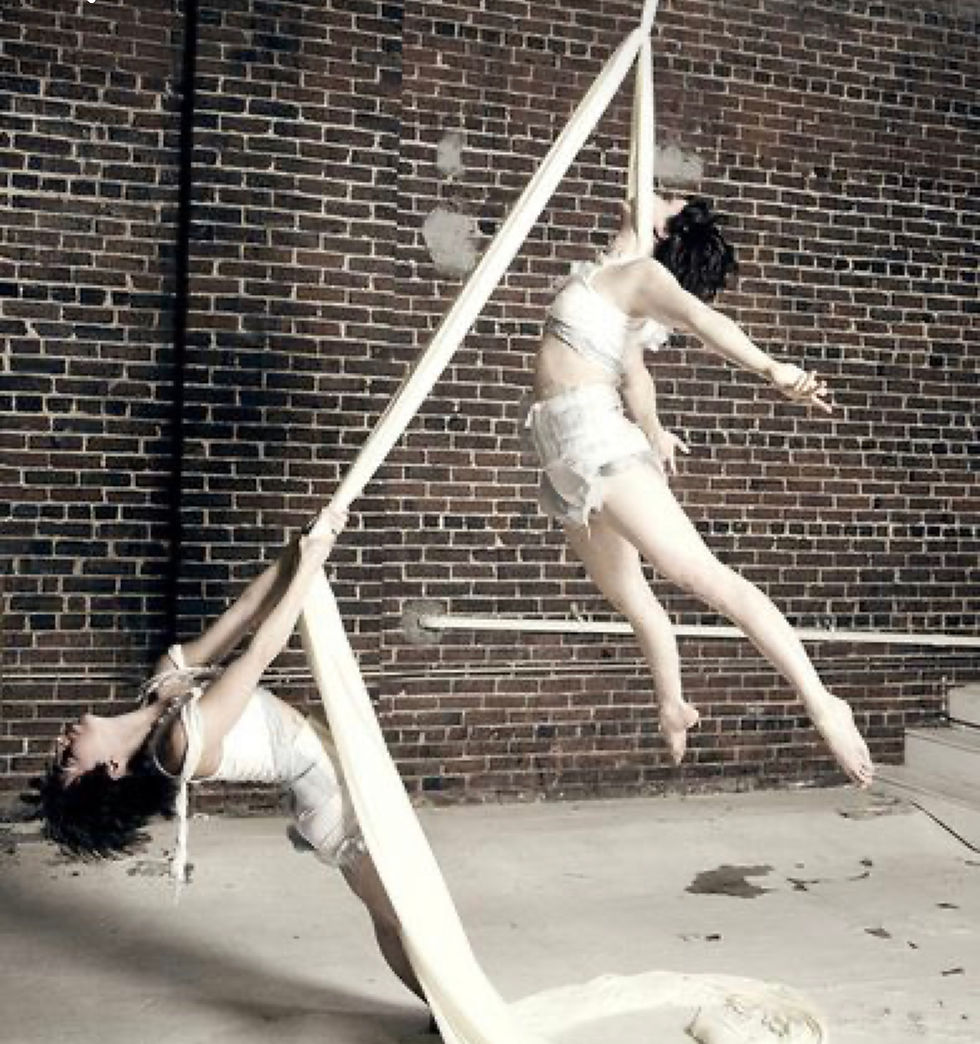Unveiling the Mesmerizing History of Aerial Silks
- Alejandra Herrera
- Dec 7, 2023
- 2 min read
Aerial silks, also known as aerial fabric or aerial tissue, is a captivating and awe-inspiring performance art that combines strength, grace, and creativity. As performers gracefully maneuver through the air, entwined in vibrant, flowing fabrics, it's hard not to wonder about the origins and evolution of this mesmerizing art form. Join us as we delve into the rich history of aerial silks and explore how it has evolved into the captivating spectacle we know today.
Ancient Roots:
The roots of aerial silks can be traced back to ancient civilizations. In India, Mallakhamb, a traditional Indian sport, involved performing acrobatics and yoga postures on a vertical pole or rope. Similarly, in China, performers showcased their skills on long silk ribbons, known as "Chinese ribbons," which were suspended from the ceiling.

Modern Beginnings:
The modern form of aerial silks as we know it today began to take shape in the 1960s and 1970s. French circus artist André Simard is often credited with pioneering the art form. Simard, inspired by his background in gymnastics and his love for the circus, began experimenting with aerial fabric, developing techniques and movements that would become the foundation of aerial silks.
Evolution and Global Spread:
As aerial silks gained popularity, artists around the world began to explore and expand upon the art form. In the 1980s, American aerialist Terry Sendgraff introduced aerial silks to the United States, further fueling its growth. Artists like Elsie and Serenity Smith, who founded the New England Center for Circus Arts, played a significant role in popularizing aerial silks in North America.

In the early 2000s, aerial silks gained mainstream attention through performances on popular television shows like "America's Got Talent" and "Cirque du Soleil." This exposure helped propel aerial silks into the public eye, captivating audiences with its breathtaking displays of strength, flexibility, and artistry.
Techniques and Styles:
Aerial silks has evolved into a diverse art form, with artists incorporating various techniques and styles into their performances. From dynamic drops and intricate wraps to fluid spins and gravity-defying poses, aerialists continue to push the boundaries of what is possible on the silks.

Today, aerial silks can be seen not only in circus performances but also in contemporary dance, theater productions, and even fitness classes. Its versatility and ability to captivate audiences have made it a sought-after discipline for both professional performers and enthusiasts alike.
The history of aerial silks is a testament to the human desire for creative expression and the constant evolution of art forms. From its ancient roots to its modern-day prominence, aerial silks has captivated audiences around the world with its beauty, strength, and artistry. As we continue to witness the growth and innovation within this mesmerizing art form, one thing is certain: the allure of aerial silks will continue to soar to new heights, leaving audiences in awe and performers inspired to push the boundaries of what is possible in the air.
So, the next time you witness an aerial silks performance, take a moment to appreciate the rich history and the countless hours of dedication and practice that have gone into perfecting this breathtaking art form.
.png)
Comments